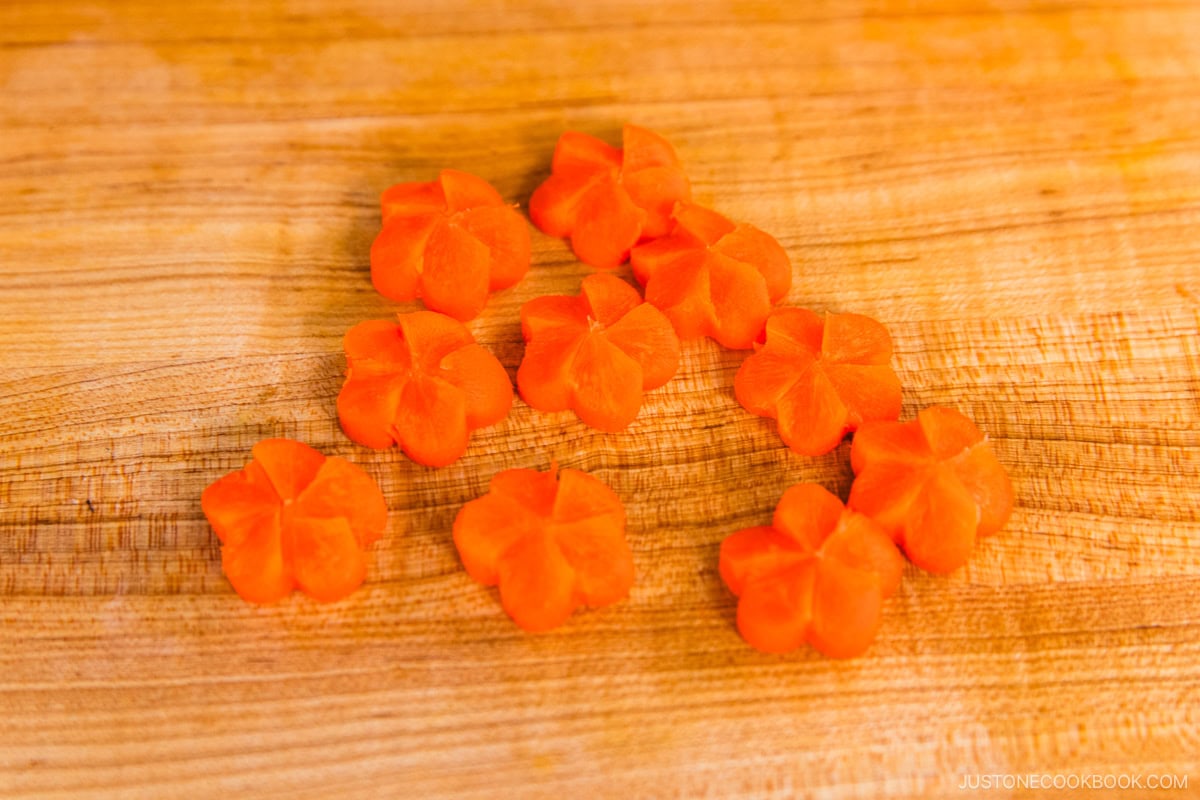Shintoism is the evolving expression of Japan’s indigenous beliefs and spiritual ethos. It emphasizes harmony with nature and the importance of living a balanced life.
Rather than a codified religion with fixed doctrines or a single founder, Shinto is a way of life rooted in cultural tradition, ritual practices, and reverence for nature and ancestors. It is deeply intertwined with Japanese identity and everyday life.
At the center of Shinto belief is the concept of kami, the innate spirit that animates all aspects of existence. There are kami of the mountains, rivers, trees, flowers, and rocks. Kami is also expressed through abstract concepts like musubi (connectiveness) and makoto (sincerity, truth, and genuine intent).
This guide offers a window into the heart of Shinto. Its timeless values, origin stories, sacred places, and the rituals that continue to shape spiritual life in Japan today.
What Is the Difference Between Shintoism and Buddhism?

Shintoism has no single deity or founder. Buddhism, by contrast, revolves around the life and teachings of Siddhartha Gautama.
Shinto also lacks formal doctrines like Buddhism’s Four Noble Truths. Instead, it centers on narratives, myths, and the spiritual and historical identity of Japan and its people.
Shintoism focuses less on enlightenment or the afterlife and more on purification rituals, righteous living, seasonal offerings, rites of passage, talismans, and prayers for protection, prosperity, and good fortune.
How Do Shinto and Buddhist Customs Differ?

In Japan, it's often said: Shinto cares for life, Buddhism cares for death.
People visit Shinto shrines for weddings, children’s rites of passage, exam blessings, and business prosperity. Buddhist temples, while also offering go-kito (formal prayers), specialize in funerary rites and maintaining ohaka (gravestones) in cemeteries called okunoin.
Only at Shinto shrines do you write prayers on wooden ema tablets. Buddhist temples feature sutra chanting and incense, while shrines may use candles.
At both temples and shrines, you can buy omamori (amulets), sign goshuin (visitor books), or get ofuda (blessing sticks) for home altars. Shinto shrines are especially known for their vibrant festivals, including danjiri (float) and mikoshi (palanquin) processions.
Core Texts of the Shinto ‘Religion’

Shintoism’s two foundational texts are:
-
Kojiki (“Records of Ancient Matters”) – compiled in 712 CE
-
Nihon Shoki (“Chronicles of Japan”) – compiled in 720 CE
The Kojiki contains mythological stories, including those of Izanagi, Izanami, and Amaterasu. It’s informal, with poems and songs, and was intended to legitimize the divine origin of Japan’s imperial line.
The Nihon Shoki is more formal and was aimed at foreign diplomacy, especially with China, by incorporating Confucian ideas and Chinese cosmology.
Izanagi, Izanami, and the Birth of the Gods
In the Kojiki, the first story describes the creation of Japan and the gods. Izanagi and Izanami were the last of seven divine sibling pairs. They stirred the sea with a heavenly spear to create Onogoro-shima, the first island.
They bore many gods, but Izanami died giving birth to the fire god Kagutsuchi. Grieving and furious, Izanagi killed Kagutsuchi and tried to retrieve Izanami from the underworld. But after breaking a vow and seeing her disfigured face, Izanami chased him with demons. He escaped and sealed the underworld, severing the realms of the living and dead.
Amaterasu in the Cave
Amaterasu, the Sun goddess and daughter of Izanagi, was born from his left eye. Her siblings included the Moon god (from his right eye) and the storm god Susanoo (from his nose).
Susanoo’s disruptive behavior led Amaterasu to hide in a cave, plunging the world into darkness. The gods held a raucous gathering outside, and the goddess Ame-no-Uzume danced provocatively. Curious, Amaterasu peeked out. A strong god pulled the rock away and sealed the cave with a shimenawa (sacred rope), ensuring sunlight would never vanish again.
The Origin of the Japanese Imperial Family

Amaterasu sent her grandson, Ninigi-no-Mikoto, to govern Japan. She gifted him the three imperial regalia: a mirror, a sword, and a jewel. He descended to Mount Takachiho in Kyushu.
His great-grandson, Emperor Jimmu, is considered Japan’s first emperor. Guided by the sacred three-legged crow Yatagarasu, he journeyed east and established rule in Yamato (modern-day Nara) around 660 BCE.
Shinto celebrations differ by region and shrine, but major observances include:
- New Year (Oshogatsu): Celebrated with Hatsumode, the first shrine visit of the year.Read more about how Japan celebrates the New Year.
- Setsubun: A spring event marked by bean-throwing rituals at shrines and temples.
- Omiyamairi: A newborn’s presentation at the shrine, typically within their first month.
- Shichi-Go-San: On November 15, boys (7), girls (5), and children (3) dress in traditional attire and visit shrines for blessings.
What Are the Most Important Japanese Shrines?

Shrines are categorized by kami, architecture, or imperial status. Kampeisha shrines are tied to the Imperial Family; Minsha shrines are community-supported. Imperial shrines often use the titles Gu, Taisha, or Jingu, while common shrines use Jinja.
Top 5 Japanese Shrines:
- Ise Jingu (Mie): Dedicated to Amaterasu, it houses 125 shrines. The Naiku sanctuary is rebuilt every 20 years.
- Izumo Taisha (Shimane): One of Japan’s oldest shrines, devoted to Okuninushi, the deity of relationships and agriculture.
- Fushimi Inari Taisha (Kyoto): Famous for its thousands of vermilion torii gates and fox guardians.
- Tosho Gu (Nikko, Tochigi): Honors Tokugawa Ieyasu. Renowned for its elaborate carvings and gold leaf.
- Meiji Jingu (Tokyo): A serene forest shrine dedicated to Emperor Meiji and Empress Shoken.
Read the blog to discover the 15 most sacred and beautiful shrines across Japan.
How Do You Pray at a Japanese Shrine?

Start with purification at the temizuya (water basin):
-
Scoop water with the dipper in your right hand and rinse your left.
-
Switch hands and rinse your right.
-
Pour water into your left palm and rinse your mouth.
-
Rinse your left hand again.
Then approach the shrine:
-
Stand quietly with your hands at your sides.
-
Bow deeply twice.
-
Clap twice.
-
Bow deeply one last time.
Bring the Spirit of Shinto Home
Looking to add a touch of Shinto culture to your daily life or space? These handpicked items reflect the aesthetic, symbolism, and spirit found throughout Japan’s shrines, festivals, and traditions.
- Want to bring home a piece of Shinto-inspired art? Check out the Fujin and Raijin folding fan, featuring Japan’s iconic wind and thunder gods in a bold, traditional design.
- Mochi plays a role in many Shinto celebrations and offerings. Taste tradition with Namamaru Japanese mochi, perfect for seasonal rituals or everyday enjoyment.
- Sake is commonly offered to the gods during Shinto rituals. Experience craftsmanship and purity with Tsuki no Katsura handmade Junmai Ginjo sake, ideal for gifting or quiet reflection.
- Fragrance plays a subtle yet powerful role in spiritual practice. This premium sandalwood incense by Kousaido comes in an elegant wooden box and evokes the calm, meditative atmosphere of traditional Japanese shrines.
The Heart and Mind Are One
The Japanese word kokoro means more than just “heart”. It reflects the union of mind, heart, and spirit. Shinto teaches that to experience our inner kami, we must recognize our place in the world and connect deeply with nature and others.
If you have thoughts or experiences with Shintoism, feel free to leave a comment below.











 English (US) ·
English (US) ·